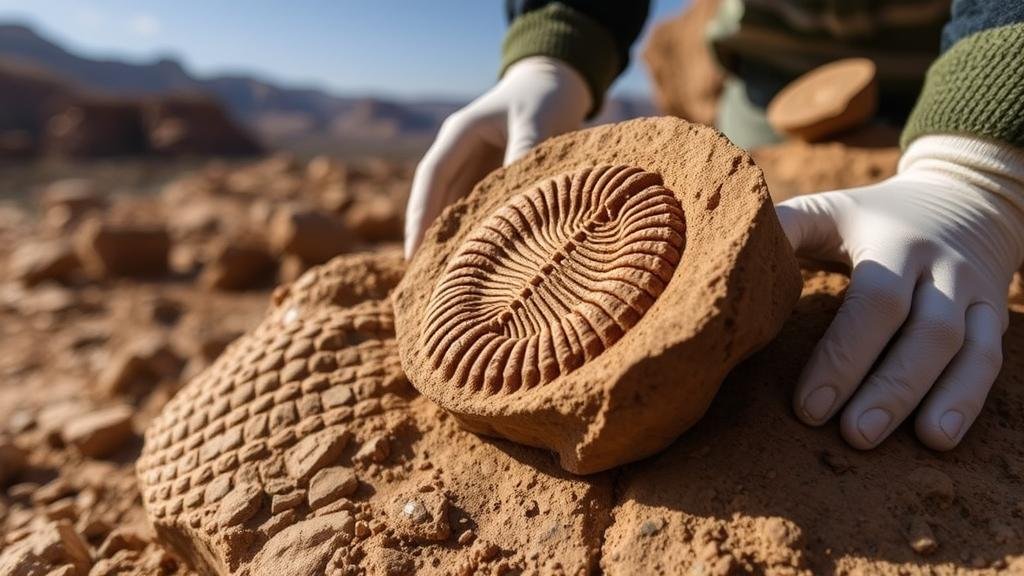Excavating trilobite fossils in the sedimentary layers of Morocco’s Anti-Atlas Mountains.
Excavating Trilobite Fossils in Morocco’s Anti-Atlas Mountains
The Anti-Atlas Mountains of Morocco present a treasure trove for rockhounds and mineral collectors, particularly those with an interest in paleontology. Renowned for their rich deposits of trilobite fossils, these sedimentary layers provide insight into ancient marine ecosystems dating back hundreds of millions of years. This article guides collectors on how to successfully excavate trilobite fossils in this remarkable region.
Understanding Trilobites
Trilobites are extinct marine arthropods that flourished during the Paleozoic Era, particularly in the Cambrian and Ordovician periods. Over 20,000 species have been identified, and their fossils often serve as important indicators of geological time. Trilobites ranged in size from just a few millimeters to over 70 centimeters, exemplifying a variety of forms and complexities.
- Trilobites were some of the first organisms to develop compound eyes, allowing for improved vision in their aquatic habitats.
- Their hard exoskeletons made them excellent candidates for fossilization, with specimens often found in abundance.
Geology of the Anti-Atlas Mountains
The Anti-Atlas Mountains are primarily composed of sedimentary rock formations, including limestone, shale, and sandstone that date back to the Ordovician and Devonian periods. These layers are essential for fossil preservation. regions geology reveals several significant aspects:
- The Tafilalt Basin, located within the Anti-Atlas, is famous for its extensive trilobite fossil beds, often yielding well-preserved specimens.
- The sedimentary layers contain rich marine deposits, characterized by fossils not only of trilobites but also of brachiopods and echinoderms.
Excavation Techniques for Fossils
Successfully excavating trilobite fossils requires a blend of technique, patience, and knowledge of the environment. Here are some practical methods:
- Site Selection: Begin by researching areas within the Anti-Atlas Mountains that are known for trilobite fossil finds, such as near the town of Erfoud and surrounding regions.
- Tools: Essential tools include a rock hammer, chisel, hand shovel, and safety goggles. Higher-end collectors may also invest in a small air scribe for finer work.
- Layering Approach: When excavating, work through layers carefully. Fossils are often embedded in specific strata, so maintaining the integrity of the surrounding rock is crucial.
Identifying Quality Fossils
Not all trilobite fossils are created equal. As a collector, its essential to know what to look for:
- Preservation Quality: Well-defined exoskeleton details and free from cracks or damage are key indicators of a quality fossil.
- Species Variety: Some species are more sought after than others. For example, the species Agnostus is often highly prized due to its unusual morphology.
Legal and Ethical Considerations
Before embarking on an excavation trip, it’s essential to understand the legal frameworks surrounding fossil collecting in Morocco. Fossil hunting can be tightly regulated, and one must ensure compliance with local laws:
- Collecting fossils in national parks or protected areas is prohibited.
- Obtain permits when necessary, as certain regions may require permissions for excavation.
Real-World Applications and Community Engagement
Engaging with local communities is vital when fossil hunting. Those in the Anti-Atlas often have valuable knowledge about the land and its geological features. Also, they may provide guidance on the best practices for sustainable collecting. Here are some suggested actions:
- Participate in local fossil-finding tours to learn more about the region.
- Consider joining fossil clubs or online forums to connect with other enthusiasts and share information.
Actionable Takeaways
Excavating trilobite fossils in Moroccos Anti-Atlas Mountains can be a rewarding endeavor for rockhounds. To maximize your success:
- Research and prepare before venturing out, and know the commonly found trilobite species.
- Use appropriate tools and techniques to carefully excavate while minimizing environmental impact.
- Respect the legal and ethical frameworks in place to protect this natural heritage.
By following these guidelines, enthusiasts can enhance their fossil collection while appreciating the geological history of one of Earth’s ancient oceans.



